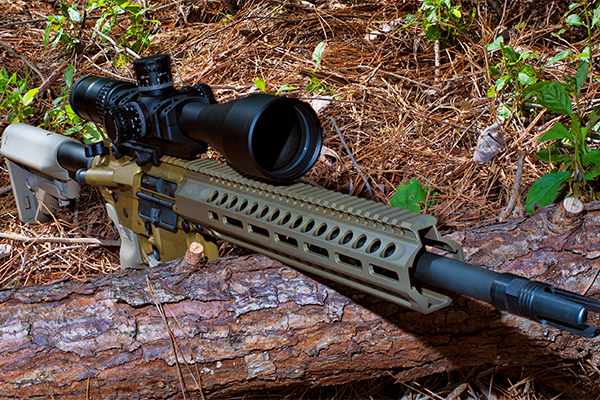
By Guy J. Sagi
Nikon has been making quality optics at sensible prices for more than 101 years, and the tradition lives on it its new-for-2018 Nikon Black FX1000 4-16×50 mm SF riflescope. It may not pack all the extravagant features some tactical icons offer in their flagship riflescopes, but the rugged unit performs extremely well at a price point that doesn’t defy gravity.
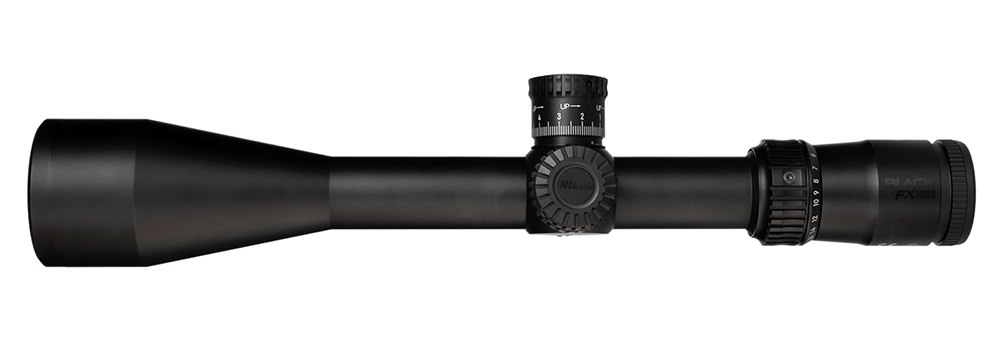
Ad to this the company’s history of grappling with force that anchors us to planet Earth, and it speaks volumes about the quality packed in its products. The firm’s F-series of cameras were used during America’s early space program, despite the availability of stratospherically priced options from other makers. I inhereted a Nikon F after it survived several tours in Vietnam, and it served as my backup camera for years. It was only retired—in full working condition—after digital took over.
That legacy means the odds are low you’ll ever need to take advantage of Nikon’s no-cost, No-Fault Lifetime Repair/Replacement Policy. It does, however, reflect the fact that the scope is a solid, long-term investment. The only time you aren’t covered is if it’s stolen, lost or deliberately damaged.
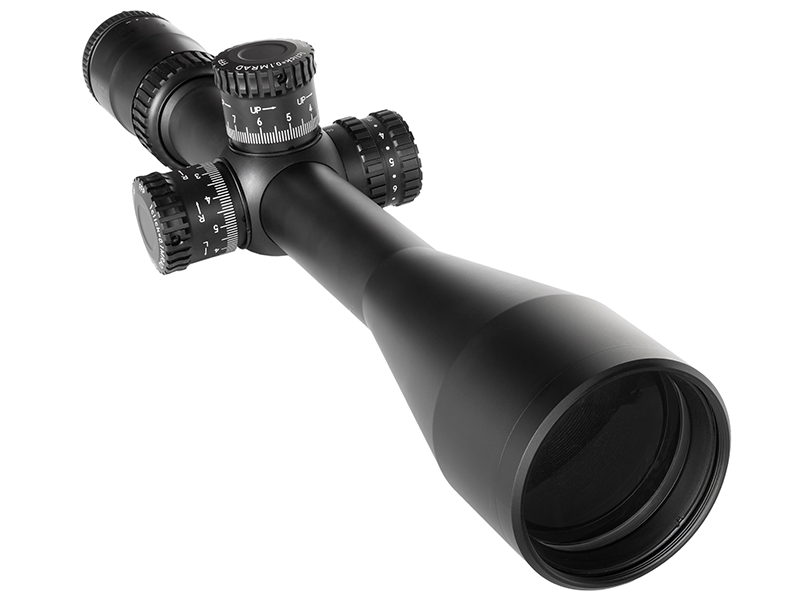
Performance That Exceeds Price
Rugged enough to survive matches, training, hunting, and abuse is one thing, but Nikon’s crammed some unexpected optical performance into this modestly priced, long-range optic, too. The multi-layer-coated lenses do a great job transmitting light, and the 50-mm objective collects downrange photons like a magnet, dawn to dusk.
Those statements are subjective, though, so an Air Force 1951 Optical Test Pattern chart was used at 50 yards. Bear in mind, there’s literally no limit to the number of variables that make comparing results from one optic to another virtually impossible. Humidity was hovering around 70 percent, for example, and its impact is significant. At 94 degrees there’s also some degree of mirage—even when you wait for the breeze to pick up—angle of the sun (time of day and season) and a host of other factors come into play.
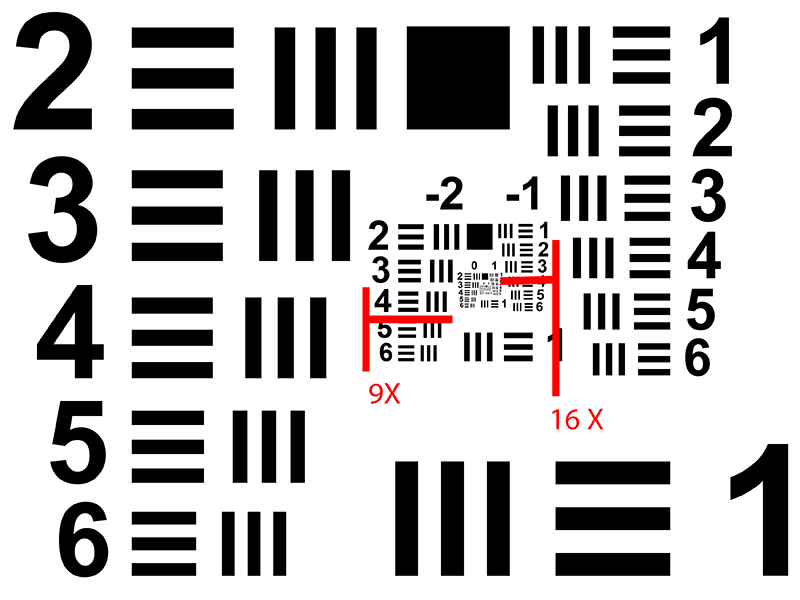
However, edge-to-edge clarity, which can change dramatically as magnification increases, as well as sharpness and contrast can be inspected. The target is designed with three vertical and three horizontal lines, in groups of descending size, and only the last crystal-clear batch counts. It was used to test Air Force lens resolution at much closer distances. Fuzzy doesn’t count, so if nothing else it provides shooters a gauge of performance before they finally get behind the eyepiece.
At 16 power, the Black FX 1000 4-16×50 mm SF resolved group 3 in batch -1 with no fuzz on the sides or odd color around the edges. That was dead center in the reticle. Performance dropped ever so slightly on the outside of the glass to group 2 in the same batch. That’s impressive, especially when you consider that chart is printed on 8.5×11 paper standing at 50 yards, which is the very minimum the riflescope can dial down to in parallax. At 9X the results were batch -2 and group 4, top to bottom and side to side, with no strange color (aberation) entering the sight picture at all.
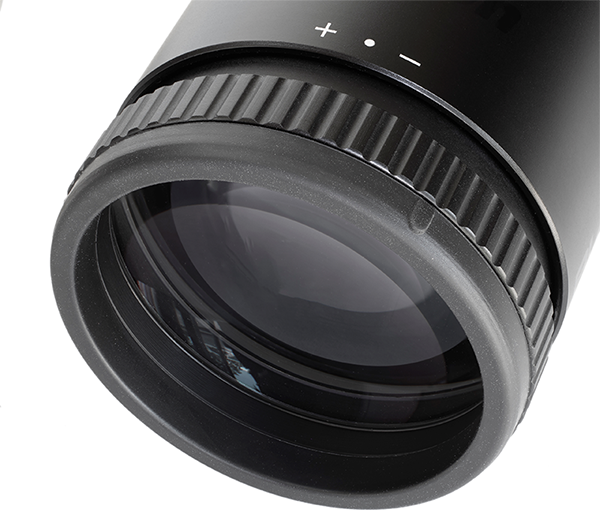
Clicks are positive and reliable on both the windage and elevation turrets. The feedback is palpable, making precision adjustment a snap, even when prone looking downrange. To change parallax, a turret on the left side of the scope (interior of the reticle on/off/brightness dial) is rotated. Throughout its 50-yards-to-infinity range, it’s somewhat stingy in movement, a distinct advantage when unwanted changes are a distinct disadvantage. The brightness dial has palpable clicks, but their feedback isn’t nearly as positive as the ones associated with point of aim. That’s OK, because you’ll probably be watching through the eyepiece anyway.
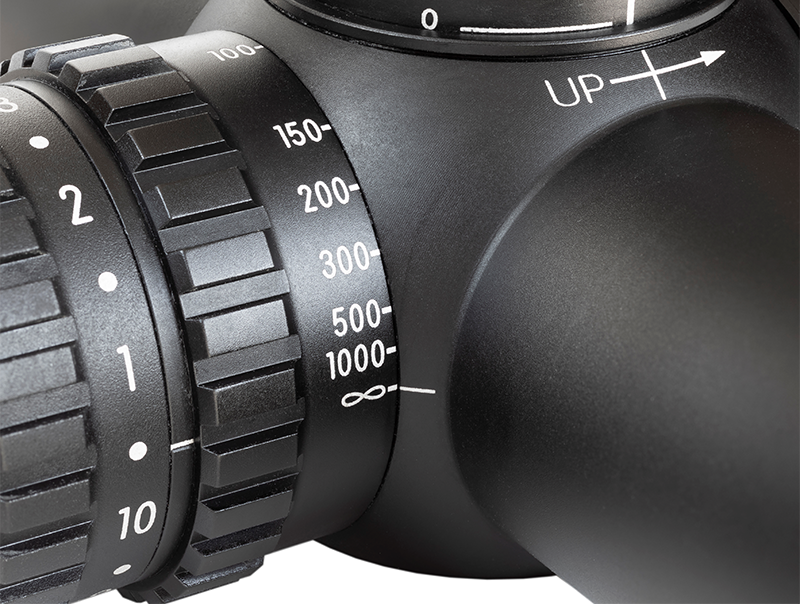
The riflescope’s ability to maintain zero and adjust accurately was tested on an FN15, and it maintained point of aim/point of impact throughout the session. Adjustments were repeatable and it walked the test target’s box—counting windage and elevation clicks on the scope to hit corners of the paper downrange while holding on the bullseye—perfectly.
Most lighted reticles on precision riflescopes are terrible, but the MRAD version on the Nikon Black FX1000 4-16×50 mm SF is a real winner. The problem with many is the brightness can make everything around the hash marks and bars get fuzzy with color, literally stripping a shooter’s ability to harness the first-focal-plane scope’s ranging capabilities and their renowned precise compensation. Even at its highest setting, 10, the red lighting doesn’t blanket the field of view with a crimson haze or tint. At the lowest setting it’s subtle, very subtle. The fact there’s an “off” between each brightness setting also means you don’t need to keep rotating the dial as conditions change.
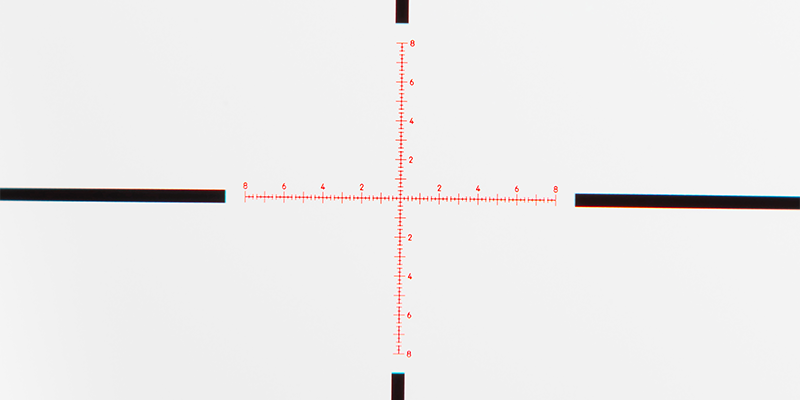
Waterproof and fogproof claims were verified by placing the scope in a freezer overnight, then pulling it out into the already mentioned North Carolina August humidy. The cold body instantly froze all the atmopheric moisture it could. It cleared methodically as it warmed, no internal fog was detected and to just to confirm the fact all range sessions were conducted after popsicling.

Vital Statistics
The Black FX 1000 4-16×50 mm SF has a 30-mm aircraft-grade aluminum alloy main tube, and the type-III hard anodized surface finish is matte black. Overall length is 14.8 inches, but if you mount the provided lens shade, that figure increases to 18.7. Weight is 23.8 ounces (without the shade).
Magnification is adjustable from 4 to 16x and objective lens size is 50 mm. The tested model came with the company’s proprietary and simple-to-use lighted FX-MRAD reticle, a breath of fresh air in a world full of Christmas tree-like versions sporting features rarely used by civilian shooters. Lens covers are also provided.
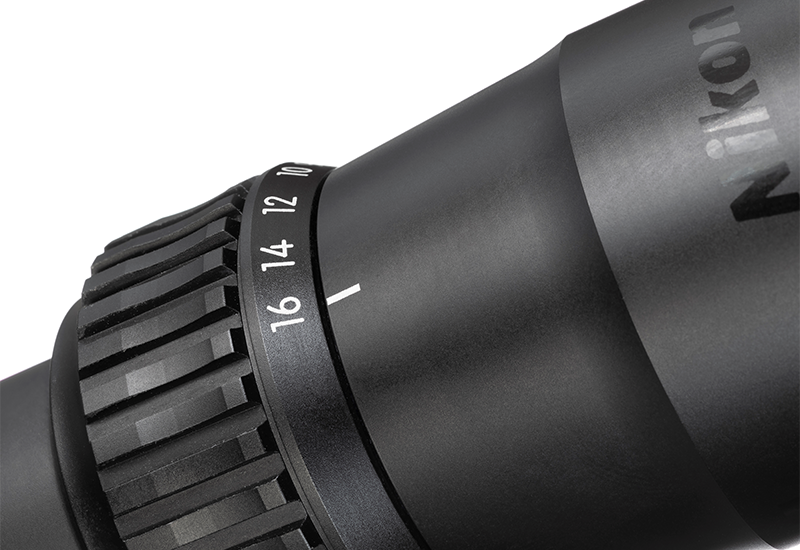
There’s a rubberized eyeguard and the optic is diopter adjustable. Parallax is adjustable from 50 yards to infiity.
Power for the lighted and etched-glass reticle—on the first focal plane—is supplied by an easy-to-find 3-volt single CR2032 battery. It rides hidden in the brightness dial and Nikon wisely provides a polymer tool for removing the panel without scratching the finish. A battery’s also included.
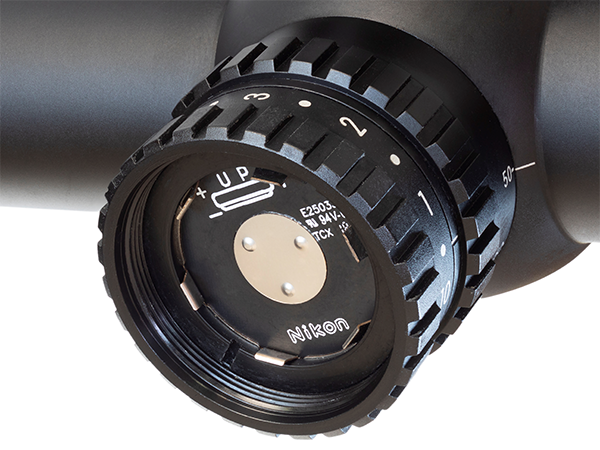
Maximum internal adjustment is 25 MRADs and a full turret rotation accounts for 10 of them. Adjustable zero stops are on both the windage and elevation dials and a small wrench comes with the kit to lock things down after point-of-aim and point-of-impact merge at the desired distance. The scope is also compatible with Nikon’s Spot On Custom Turrets.
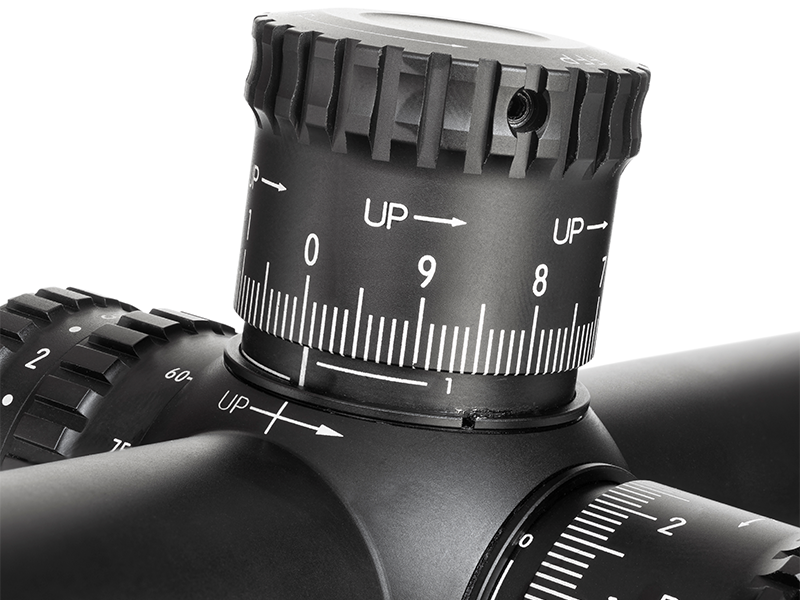
The 100-yard field of view at 4 power is 27.2 feet. At the magnification setting of 16 the figure drops to 6.8 feet.
Two Complaints
After inspecting, mounting, testing and discovering the value-packed Black FX 1000 4-16×50 mm SF, there were some surprises. At this price point you can’t have everything, but no speed bump on the magnification ring? Yes, the scope’s dial has plenty of grooves and surface for reliable adjustment with gloves. However, when you’ve been prone for hours, zooming in and out to find that distant steel, sometimes it’s nice to have a tactile reference for your magnification setting.
The other complaint is so minor that it’s really nitpicking. The scope seemed somewhat lethargic in clearing its fog and ice. Inadvertently re-enacting the popsicle test in nature isn’t exactly commonplace, though.
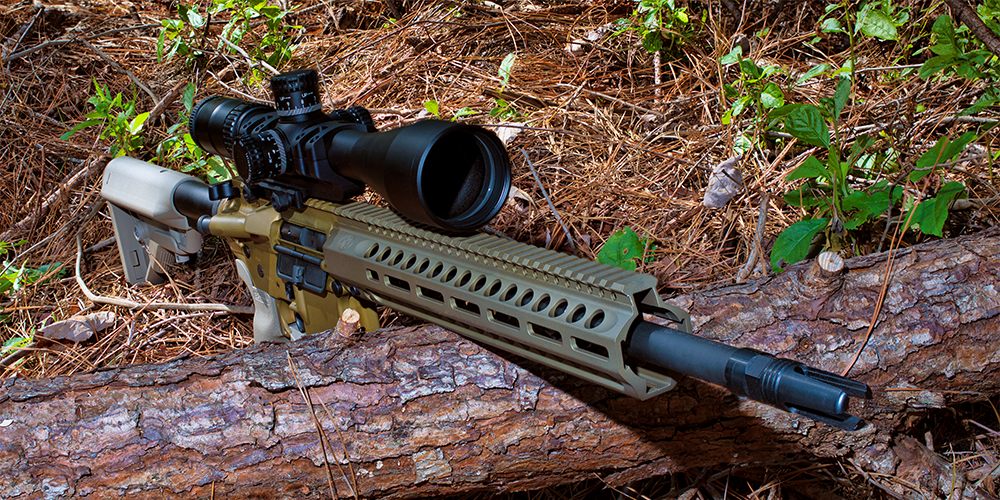
Nikon FX1000 Riflescope Review
There’s no doubt Nikon has a real winner in its first entry into the tactical optics market. It lives up to the company name, and follows the F-series camera legacy of reliable performance. The Nikon Black FX 1000 4-16×50 mm SF is a viable candidate for anyone looking for a solid riflescope. It’s one of those rare long-term investments capable of paying dividends at firing lines for years to come.




Comments (1)
bman940says:
September 9, 2018 at 11:38 amGreat review! I can’t wait to get mine mounted up and dialed in!